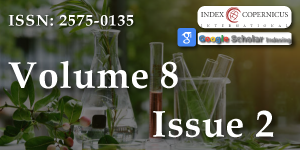Phytochemical Compounds and the Antifungal Activity of Centaurium pulchellum Ethanol Extracts in Iraq
Main Article Content
Abstract
The current study included a variety of phytochemical substances that were extracted from Centaurium pulchellum and showed a wide range of medicinal properties from the plant's reproductive and vegetative parts against the pathogenic fungus Aspergillus flavus. The vegetative and reproductive components of Centaurium pulchellum were subjected to (GC-MS) analysis for phytochemical study. The data indicated that fungal activity was the highest. Four extract concentrations of 5, 10, 15, and 20 mg/ml were utilized in the investigation, and the diameter of the colonies measured at each concentration was 90.00, 36.00, 28.00, 18.00, and 0.00 mm, respectively.
Nine bioactive phytochemical compounds were found in Centaurium pulchellum's vegetative and reproductive portions, according to GC-MS analysis of the chemicals. Another study reported phytochemical substances that: 1-H-Imidazole-2-carboxaldehyde, 1-methyl-;Acetaminophen; n-Hexadecanoic acid; Mercaptoacetic acid, 2TMS derivative; 1.2,3-Dimethyl-5-(trifluoromethyl)-1,4-benzenediol #; Mercaptoethanol, 2TMS derivative-; Bis-(3,5,5-trimethylhexyl) phthalate Tetrakis(trimethylsilyl) orthosilicate #;- 1.1-Isopropoxy-3,3,3-trimethyl-1-[(trimethylsilyl)oxy]disiloxanyl tris(trimethylsilyl) orthosilicate #.
Article Details
Copyright (c) 2024 Khadhum NJ, et al.

This work is licensed under a Creative Commons Attribution 4.0 International License.
The Journal of Plant Science and Phytopathology is committed in making it easier for people to share and build upon the work of others while maintaining consistency with the rules of copyright. In order to use the Open Access paradigm to the maximum extent in true terms as free of charge online access along with usage right, we grant usage rights through the use of specific Creative Commons license.
License: Copyright © 2017 - 2025 |  Open Access by Journal of Plant Science and Phytopathology is licensed under a Creative Commons Attribution 4.0 International License. Based on a work at Heighten Science Publications Inc.
Open Access by Journal of Plant Science and Phytopathology is licensed under a Creative Commons Attribution 4.0 International License. Based on a work at Heighten Science Publications Inc.
With this license, the authors are allowed that after publishing with the journal, they can share their research by posting a free draft copy of their article to any repository or website.
Compliance 'CC BY' license helps in:
| Permission to read and download | ✓ |
| Permission to display in a repository | ✓ |
| Permission to translate | ✓ |
| Commercial uses of manuscript | ✓ |
'CC' stands for Creative Commons license. 'BY' symbolizes that users have provided attribution to the creator that the published manuscripts can be used or shared. This license allows for redistribution, commercial and non-commercial, as long as it is passed along unchanged and in whole, with credit to the author.
Please take in notification that Creative Commons user licenses are non-revocable. We recommend authors to check if their funding body requires a specific license.
1. Ressources U. internationale pour la conservation de la nature et de ses. A guide to medicinal plants in North Africa. IUCN; 2005.
2. hazanfar S, Edmondson JR. Flora of Iraq.Lythyraceae to Camanulaceae Ministry of Agriculture Republic of Iraq.vol.5.part 2.p28. 2013
3. GAl-Allaq SA, AL-Mossawei AH, Alzhra LA. Species of Centaurium Hill. In Iraq and its geographical distribution. Baghdad Science Journal. 2013; 10(1):22-31.
4. Mifsud S. Centaurium pulchellum (Lesser Centaury): MaltaWildPlants. Com-the online Flora of the Maltese Islands. 2002.
5. Saeed JF. Morphological Study of the Centaurium pulchelum and C. erythraea (Gentianaceae) in Kurdistan region of Iraq. Education. 2013; 7(1):01-06
6. Ubsdell RAE. Studies on variation and evolution in Centaurium erythraea Rafn and C. littorale (D. Turner) Gilmour in the British Isles. 3. Breeding systems, βloral biology, and general discussion. Watsonia. 1979; 12:225-232.
7. Krstić D, Janković T, Šavikin-Fodulović K, Menković N, Grubiŝić D. Secoiridoids and xanthones in the shoots and roots of Centaurium pulchellum cultured in vitro. In Vitro Cellular & Developmental Biology-Plant. 2003;3 9:203-207
8. Van der Sluis WG. Chemotaxonomical investigations of the genera Blackstonia and Centaurium (Gentianaceae). Plant Systematics and Evolution. 1985; 149:253-286
9. Bibi H, Ali I, Sadozai SK, Atta-Ur-Rahman. Phytochemical studies and antibacterial activity of Centaurium pulchellum Druce. Nat Prod Res. 2006 Aug ;20(10):896-901. doi: 10.1080/14786410500162047. PMID:16854716.
10. Siler B, Misić D, Nestorović J, Banjanac T, Glamoclija J, Soković M, Cirić A. Antibacterial and antifungal screening of Centaurium pulchellum crude extracts and main secoiridoid compounds. Nat Prod Commun. 2010 Oct;5(10):1525-30. PMID: 21121240.Figure 6Figure 7Figure 8Figure 9Figure 10control 5 mg/ml10 mg/ml15 mg/ml20 mg/mlPlate 1: Aspergillus ϔlavus growth cultivated in different concentrations of methanol extract of C. pulchellum.

